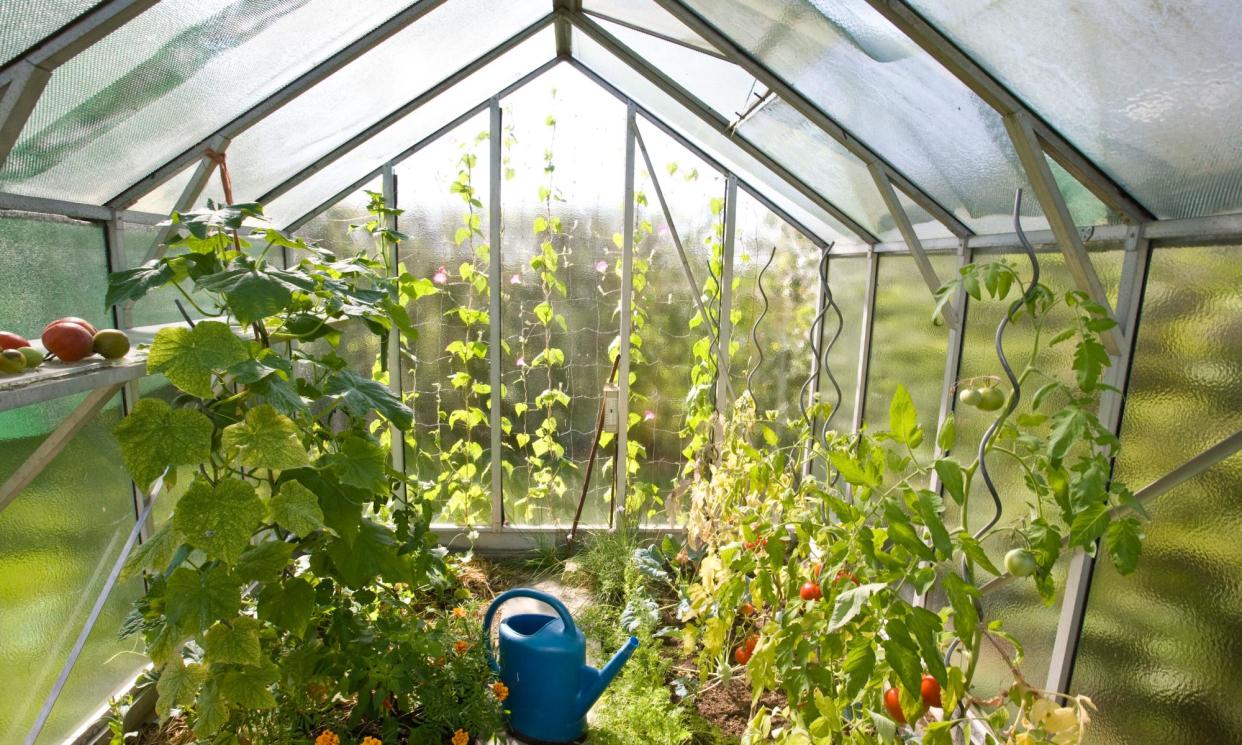It’s feeding time: why plants need more than sunlight and water to thrive

One of my earliest gardening memories is of tomato feed: the dark brown potion that left a sticky residue, the ritual of pouring it into the watering can and diluting it like squash. Most of all, it’s an olfactory memory: there’s something Proustian about tomato feed, of hot greenhouse stuffiness and being small. It’s one of the key smells of summer for me.
This is partially down to my grandad, who was a Percy Thrower type, growing tomatoes in his greenhouse and trails of sweet peas for my grandmother. Photographic evidence attests that he merrily let my siblings and me run around with beanpoles without a care in the world. But it’s also because even fair-weather gardeners, like my mother was when we were children, can be persuaded to feed plants in the warmer months.
Apply organic all-round feed to damp soil every fortnight between the clocks going forward and them going back
We’re at that time of year – nearing the summer solstice, the temperature rising and with it the explosion of growth in the garden – when we need to think about sustaining what we grow. Flowers, and the fruit and seed that appear after, need energy to grow. That comes from the sun, of which there’s more in these warmer months, but it also comes from nutrients in the ground. The key nutrients are nitrogen (chemical symbol N), phosphorus (P) and potassium (K).
Nitrogen boosts leafy growth, potassium will encourage your plants to flower and fruit, and phosphorus benefits roots, so is best applied in autumn as a result. Most plant food will have NPK written on the packaging, to indicate that it contains all of them. But tomato feed is particularly high in potassium, which makes it as good for flowering plants as it is for tomatoes (also a flowering plant, but probably not the reason we grow them).
There are different ways of making sure your plants get the nutrients they need and, as with most things in the garden, everyone will have their own take. I lay a thick mulch of organic matter over my beds in late autumn and winter: this rots down into the soil, ready to nourish dormant plants once they start to grow in the spring. Others will have meticulous feeding schedules, with different balances of feed for different plants.
If you’re overwhelmed, there are key takeaways: containers and pots need feeding through the summer because they don’t have as much soil to draw nutrients from. Apply an organic all-rounder (I like Maxicrop and Natural Grower), correctly diluted, to damp soil every fortnight between the clocks going forward and the clocks going back. If you think you can water and feed dry containers in one go, you’ll waste a lot of fertiliser as it runs straight through parched soil. And, if this is your jam, take a whiff as it mixes in with the water.
Alice Vincent’s latest book, Why Women Grow: Stories of Soil, Sisterhood and Survival (Canongate, £10.99), is available at guardianbookshop.com


